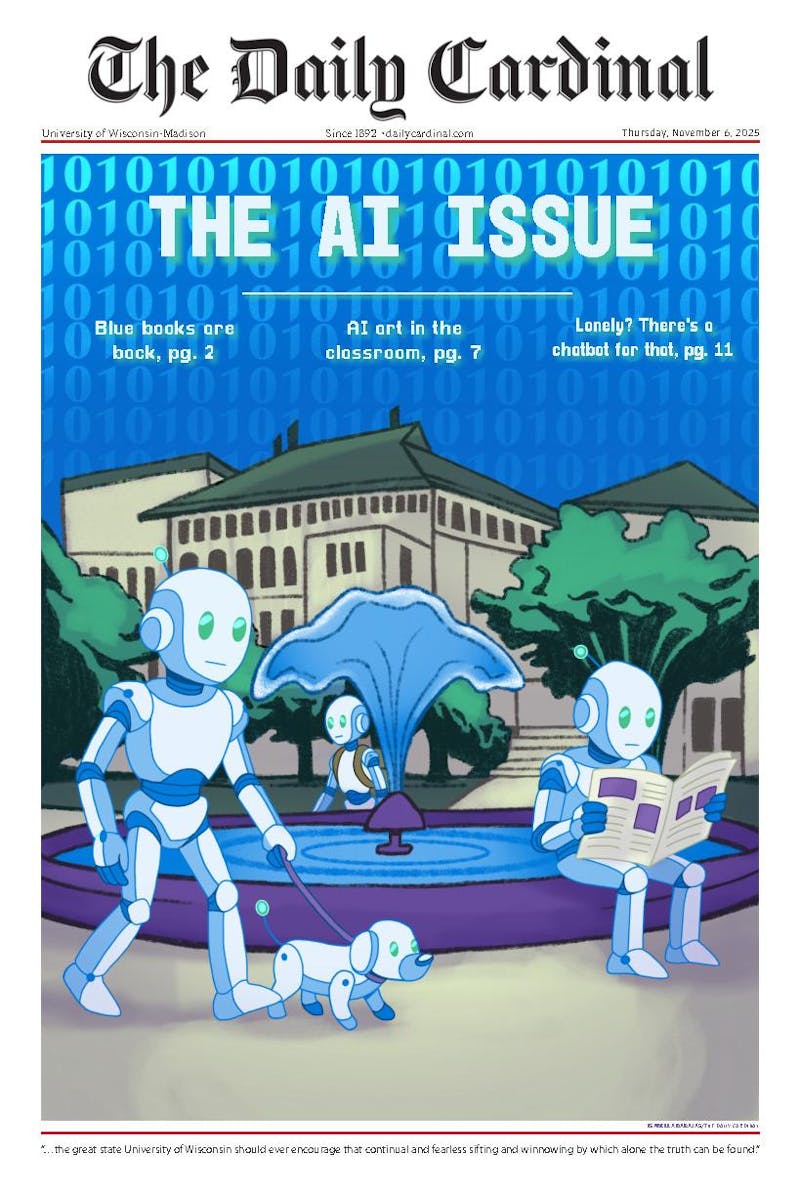The invention of the telephone late in the 1800s was a major step in making communication over long distances easier. In the digital age, personal computers and the Internet have been further shrinking the space between people. Now, wireless communications are bringing people closer together than ever before, according to Daniel Vanderweide, associate professor of electrical and computer engineering.
\Wireless technology makes it possible for people to be in touch more often,"" he said. ""The challenge is to get more coverage and be less intrusive.""
One popular wireless provider offering such coverage in the campus area is Verizon Wireless, 244 W. Gilman St. They offer two different calling plans. The Local DigitalChoice plan is cheaper and covers south-central and south-eastern Wisconsin, whereas the America's Choice plan covers most of the nation. According to manager Matt Vanest, America's Choice is by far the most popular plan with students, many of whom have family and friends outside of Wisconsin and want to avoid roaming charges if they go out of the local calling area.
""It's good for students, since a lot of students here are from the East Coast,"" he said.
A more recent feature is that of text messaging, sending or receiving short text messages with your phone. Messages can be sent between phones, or, using Verizon's Web site, between a phone and the Internet. Not only can this be used to chat, but also for movie news, stock quotes and other information. All you need to do, said Vanest, is go to Verizon's Web site and choose what information you want sent and how often.
Some students use cell phones as their primary phones. Junior Dennis Ioffe bought his, an LG TM510, from Verizon Wireless this past summer and is quite pleased with it thus far.
""It works everywhere and has awesome reception,"" Ioffe said.
Ioffe's phone has all the included features, such as voice mail and text messaging. His is also one of many which are ""Web-enabled,"" according to Verizon's Web site, meaning students can browse the Internet using the phone. However, Ioffe says he doesn't use the text messaging service, and having an internet connection in his apartment makes the feature somewhat redundant.
There are students who do have use for wireless Internet connection, however. Any student with a laptop, wireless network card and a UW-Madison Net ID can use Wireless WiscWorld in any of the 12 wireless areas on campus. According to the DoIT Web page, there is a wireless area within a five-minute walk from any building on campus. Sophomore Aaron Lindh, for example, logs on to the network from Memorial Union. Lindh said the connection has been trouble-free since he installed it.
However, there are other options besides laptops and Wireless WiscWorld. Users desiring more portability can use wireless personal digital assistants. According to its Web site, the University Bookstore Digital Outpost, 673 State St., carries two such devices made by Palm Computing. The Palm Vx and Palm VIIx both have wireless Internet and e-mail capabilities through the Palm.net service.
After signing up for the service, users get a new Palm.net e-mail address. Users can have their Yahoo or other personal mail delivered to the Palm.net address. The Palm.net address can also be checked at any Internet terminal, so users can access their e-mail even without their PDAs.
As long as telephones and PDAs are now able to access the Internet, why not put them together? That's the reasoning Handspring applied when creating its new Treo Communicator. The Treo combines a phone, an organizer, the Web and e-mail all into one compact piece of equipment. It operates as a dual-band world phone, with features like speed dial, three-way calling and call history.
The organizer has a phone book which you can dial directly from, as well as a date book, to do list, memo pad and other applications. If you already have a device that uses the Palm OS, you can easily transfer that data to the Treo. The Treo can also send text messages to other mobile phones or an e-mail address. Using a special Web browser, the Treo isn't limited to Web sites that are optimized for mobile access, but can access almost any site.
Such wireless devices cost between $299 and $399, and therefore are out of many college students' budgets. However, as the technology becomes more common, it will become more affordable. The lines between computers and phones will continue to blur, making it easier for students to access course Web pages, e-mail friends, classmates and professors, and play games while procrastinating on homework.





